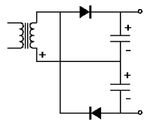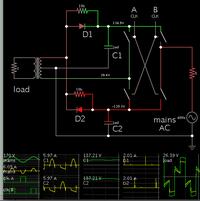Follow along with the video below to see how to install our site as a web app on your home screen.
Note: This feature may not be available in some browsers.

This technique allows the capacitors to send juice to the transformer, in the reverse direction.
When the inverter is on C1 and C2 are charged to +/- 325V. U4 and U6 generate the sine output. U3,U5 are off.Hi
We have an Inverter Board that ceased working an year ago. It is a Push-Pull Converter Based one. The same circuit is used to charge the battery back from mains.
In the H- Bridge stage, It is IGBTs and not MOSFETs.
View attachment 116905
